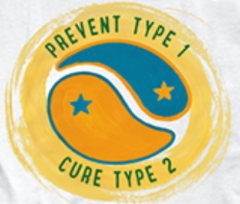The word diabetes comes from the ancient Greek word for siphon. A siphon is a tube that is used to transfer water from one vessel to another. Ancient Greek physicians used the word diabetes to refer to any disease that makes you pee too much.
What is sugar diabetes?
Eventually, physicians realized that there was more than one kind of diabetes. You could tell them apart by tasting the urine. (Of course, nowadays we use laboratory tests instead of tasting the urine!) One kind of diabetes made the urine taste sweet, like honey. That kind of diabetes was called diabetes mellitus, which means honey diabetes.
What causes diabetes mellitus (sugar diabetes)?
Doctors use the term diabetes mellitus to refer to a group of unrelated diseases that result from different causes. However, they all have one important thing in common. If left untreated, they cause a sugar called glucose to build up to high levels in the bloodstream. When the blood glucose level is very high, some of the glucose starts to pass out of the body through the kidneys. This glucose draws water along with it. As a result, the person passes a lot of sugary urine. Because they lose so much water, they get very thirsty. Since the sugar that they are losing represents calories, they tend to lose weight. That is why sugar diabetes produces four classic signs:
- Polyuria (lots of urine)
- Polydipsia (severe thirst)
- Glycosuria (sugar in the urine)
- Weight loss
What causes diabetes mellitus?
There are two main types of diabetes mellitus. Type 1 diabetes (the French call it diabète maigre, which means thin diabetes) results from the loss of the insulin-producing cells of the pancreas. If you have thin diabetes, it means that your pancreas can no longer make enough insulin to keep you alive. Type 2 diabetes (the French call it diabète gras, which means fat diabetes) means that your body is resisting the effects of the hormone insulin. If you have fat diabetes, it means that you are a naturally thin person. Your body is trying to prevent you from storing the fat that you have been eating. The solution to fat diabetes is to cut out the fat. You can reverse type 2 diabetes by eating less and exercising more. You can reverse it even more quickly by switching to a low-fat diet.
A person can have some degree of insulin shortage (thin diabetes) and insulin resistance (fat diabetes) at the same time. A slight degree of insulin resistance is normal during pregnancy. However, if added to the insulin resistance that represents a resistance to gaining too much weight, the normal insulin resistance of pregnancy can lead to gestational diabetes, which is a temporary case of fat diabetes during pregnancy. Diabetes mellitus is particularly dangerous during pregnancy. Any pregnancy in a woman with diabetes mellitus is a high-risk pregnancy.
Regardless of which type of diabetes mellitus you have, a high-carbohydrate diet is important to maintaining blood sugar control. The more carbohydrate you eat, the more sensitive your body becomes to insulin.
What is diabetes insipidus (water diabetes)?
The other kind of diabetes makes people pass urine that was so dilute that it has no flavor. It was called diabetes insipidus, which means flavorless diabetes. Water diabetes can result from several different causes.
What causes water diabetes?
The brain and kidney normally work together to control the water balance in the body. Thus, water diabetes generally results either from a problem in the brain or a problem in the kidney. When you become dehydrated, your brain is supposed to make a hormone called antidiuretic hormone, which helps you retain water. While you are dehydrated, your brain is supposed to make you feel thirsty, so that you will drink water. Several things can go wrong with this system of control:
- After a brain injury, the brain may not produce enough antidiuretic hormone. The solution to this problem is to take supplemental antidiuretic hormone.
- The brain’s thirst mechanism might be on even when you are not dehydrated. The solution to this problem is to restrict the person’s access to water.
- The kidney might not be responding normally to antidiuretic hormone. The solution to that problem is to treat the underlying cause.
- During pregnancy, the placenta makes an enzyme that breaks down antidiuretic hormone. As a result, women can get a temporary case of water diabetes during pregnancy. Water diabetes during pregnancy can be serious and can lead to the death of the mother or the baby.
In people with water diabetes, the main challenge is to control the balance of water and electrolytes (such as sodium and potassium) in the body.

